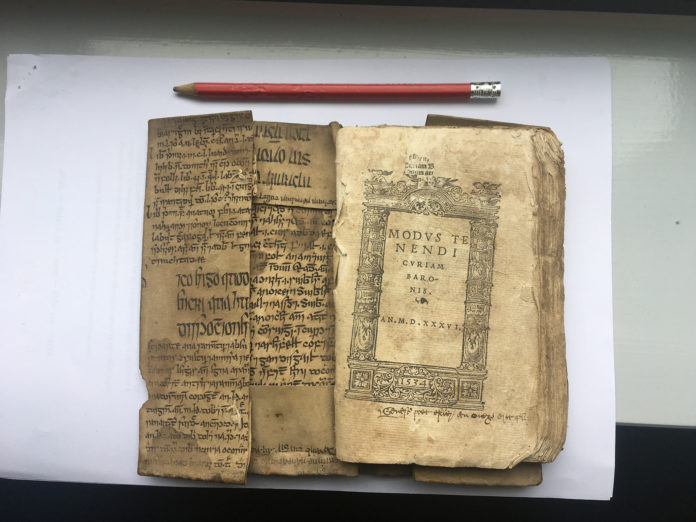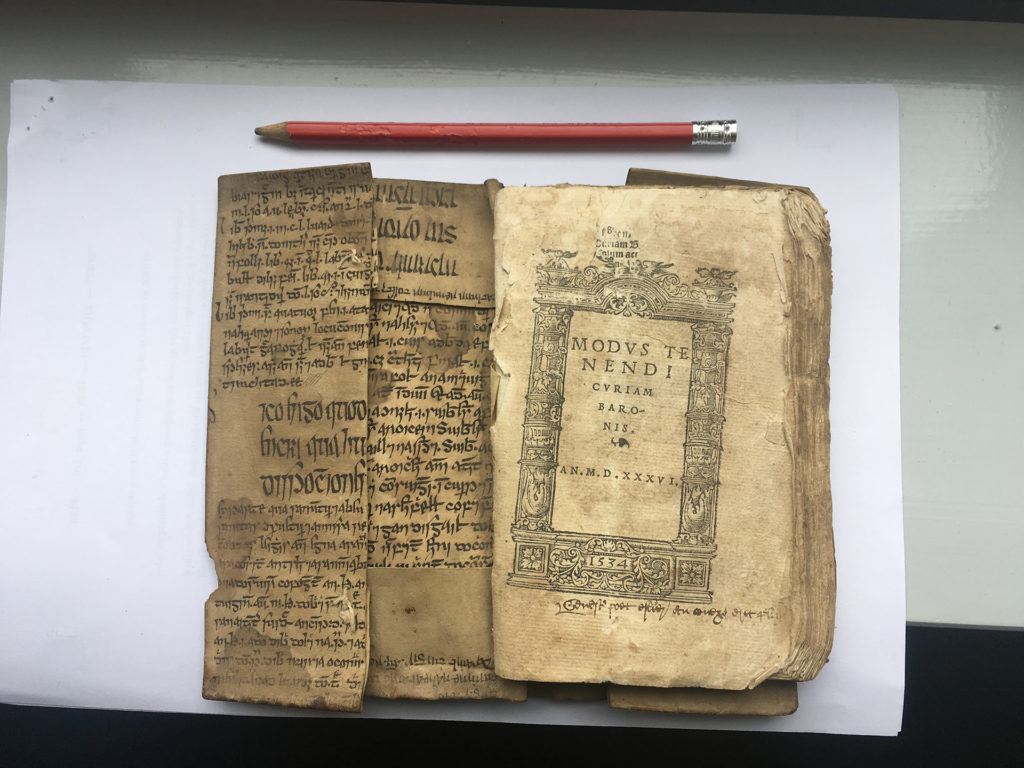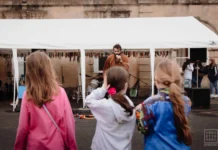
University College Cork (UCC) Professor of Modern Irish, Pádraig Ó Macháin, was made aware of an early printed book in the possession of a family in Cornwall, with an exciting connection to medieval Irish learning.
The book, a pocket-sized Latin manual of local administration, was printed in London in 1534/1536, and had been in the family’s possession since that time. What was of interest to Prof. Ó Macháin was the binding of the book.
This consisted of a sheet, full of text in Irish, cut from a 15th-century Irish vellum manuscript, that had been trimmed and folded and stitched to the spine of the printed book in order to form a sturdy binding.
‘The use of parchment cut from old manuscripts as a binding for later books is not unusual in European tradition,’ says Pádraig, ‘but this is the first time that a case has come to light of such a clear example of the practice in a Gaelic context.’

From photographs of the binding supplied by the owners, Prof. Ó Macháin established that the Irish text was a medical one.
‘A quarter of what survives of late-medieval manuscripts in the Irish language is medical in content,’ says Ó Macháin, ‘an indication of the practical purpose of these books in Ireland of the time.’
The identity of the text was established immediately by Ó Macháin’s collaborator of many years, Prof. Aoibheann Nic Dhonnchadha of the Dublin Institute for Advanced Studies, the only living expert on medieval Irish medicine.
It is a fragment of a translation into Irish – previously unrecorded – of the ‘Canon of Medicine’ by the Persian physician Ibn Sena (980–1037), also known as Avicenna, considered one of the most significant physicians in the Islamic Golden Age.
The existence of this text was not hitherto known in Ireland
The ‘Canon of Medicine’ was a great medical encyclopaedia which, through translation into Latin (from which the Irish text itself is translated), achieved great popularity in Europe, where state-of-the-art medical theory and practice in medieval times had their origins in the Muslim world.
The Irish fragment contains parts of the opening chapters on the physiology of the jaws, the nose and the back. The existence of this text was not hitherto known in Ireland.
Medical scholarship in medieval Gaelic Ireland was on a par with that practised on the Continent, and was the most outward-looking of all the native branches of learning. There is evidence of Irish scholars traveling to European medical schools, and bringing their learning back to the medical schools of Ireland.

Because of the importance of the manuscript fragment to the history of Irish learning and medicine, the owners agreed that the binding should be removed from the book by John Gillis of TCD, opened out and digitised under the supervision of Prof. Ó Macháin to whom they entrusted the book, and a new binding provided.
This was completed and ‘The Avicenna Fragment’ is now available for viewing on the Irish Script on Screen website.
‘The discovery and digitisation of the text was a scholarly adventure,’ says Ó Macháin, ‘One of those occasions when many people, not least the owners of the book, were working together towards a common purpose for the cause of pure learning. It was a pleasure to have been able to make it happen and to have been part of it.’
A public seminar on ‘The Avicenna Fragment’ and on aspects of Gaelic medieval medicine will be hosted by UCC on 7 March, 2 p.m.











